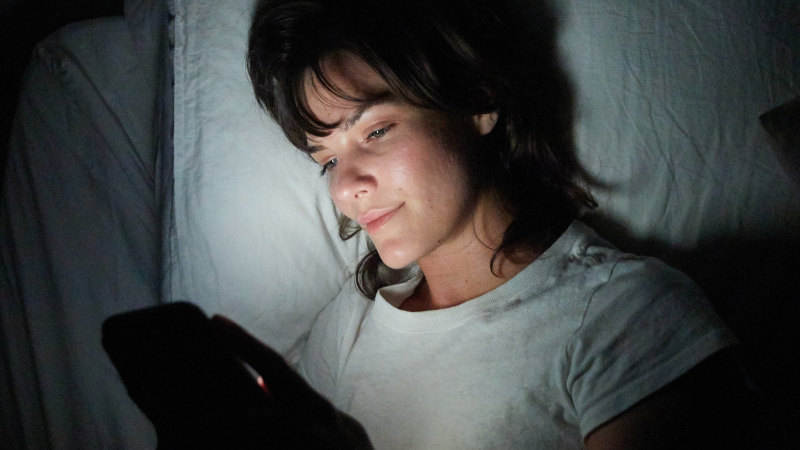[ad_1]

“Our bodies developed over many years to process a certain type of light and pattern of exposure,” Sullivan says. This was exposure to broad-spectrum light during the day, followed by a rest and repair cycle at night. Now we have round-the-clock exposure to light sources we’re still learning about.
How does blue light affect the skin?
Loading
The most substantial evidence for electronic blue light’s impact on skin is in the area of pigmentation. Sydney-based dermatologist Dr Ritu Gupta says this is particularly notable for people with deeper skin tones. “We see a significant absorption of blue light by melanin,” Gupta says. “This stimulates overproduction of melanin, which can create or worsen hyperpigmentation.”
One way dermatologists assess the skin’s likely reaction to different types of UV light, including blue light, is with the Fitzpatrick scale. It’s a classification system used since 1975 to measure the risk of burning from sunlight based on skin tone, with Fitzpatrick 1 denoting extremely fair skin and Fitzpatrick 6 denoting extremely deep skin. In 2023, a study of 41 women found that exposure to low doses of blue light triggered or worsened pigmentation in those who tanned easily – Fitzpatrick skin types three to six.
But pigmentation isn’t the only issue. “There is evidence blue light damages the extracellular matrix, which is the collagen layer, via a process of oxidisation,” says Sullivan. A 2018 article published in the Journal of Biomedical Physics and Engineering notes that exposure to electronic devices for as short as one hour could generate reactive oxygen species, triggering inflammation and exacerbating skin ageing.
Does blue light skincare work?
It’s spine-chilling stuff, but most of us are unable and unwilling to go off the grid to save our skin. And the beauty industry knows it.
Skincare aimed at protecting us from blue light has become a category valued at USD$890.9 million ($1.336 billion). Today, we can buy $120 blue light protective facial mists, expensive serums and lip glosses with patented ingredients that claim to “shield” us from screen damage.
Dr Deshan Sebaratnam is one dermatologist who feels there has not been sufficient testing outside laboratories to justify dedicated anti-blue light skincare routines, which means the efficacy of these products is hard to measure. ”We don’t have established standards, compared to SPF standards, that govern protection against ultraviolet light,” says Sebaratnam.
All dermatologists agree that the best measure for protection against blue light is sunscreen. Mineral and physical blockers, such as titanium dioxide and iron oxides provide better protection than chemical blockers.
Loading
What of glamorous botanicals such as liquorice and French pine bark, occasionally patented under scientific-sounding names such as Azureshield? According to Gupta, they’re unlikely to be of sufficient concentration to have any significant benefit.
She recommends opting for serums and moisturisers that include simple antioxidants such as vitamin C, which scavenges free radicals generated by blue light, and niacinamide, which has anti-inflammatory benefits.
And take that routine to bed. “Traditionally, we’ve been told to use antioxidants during the day to protect from pollution, and ingredients like retinol at night,” says Sullivan. “Now, there’s more oxidative stress in our home environments, so it’s worth including antioxidants in your nighttime routine.”
Personally, I find nothing goes better with an evening TikTok binge than a niacinamide serum. It’s not calming enough to fix my disrupted sleep cycle, but nothing is.
Make the most of your health, relationships, fitness and nutrition with our Live Well newsletter. Get it in your inbox every Monday.
[ad_2]
Source link